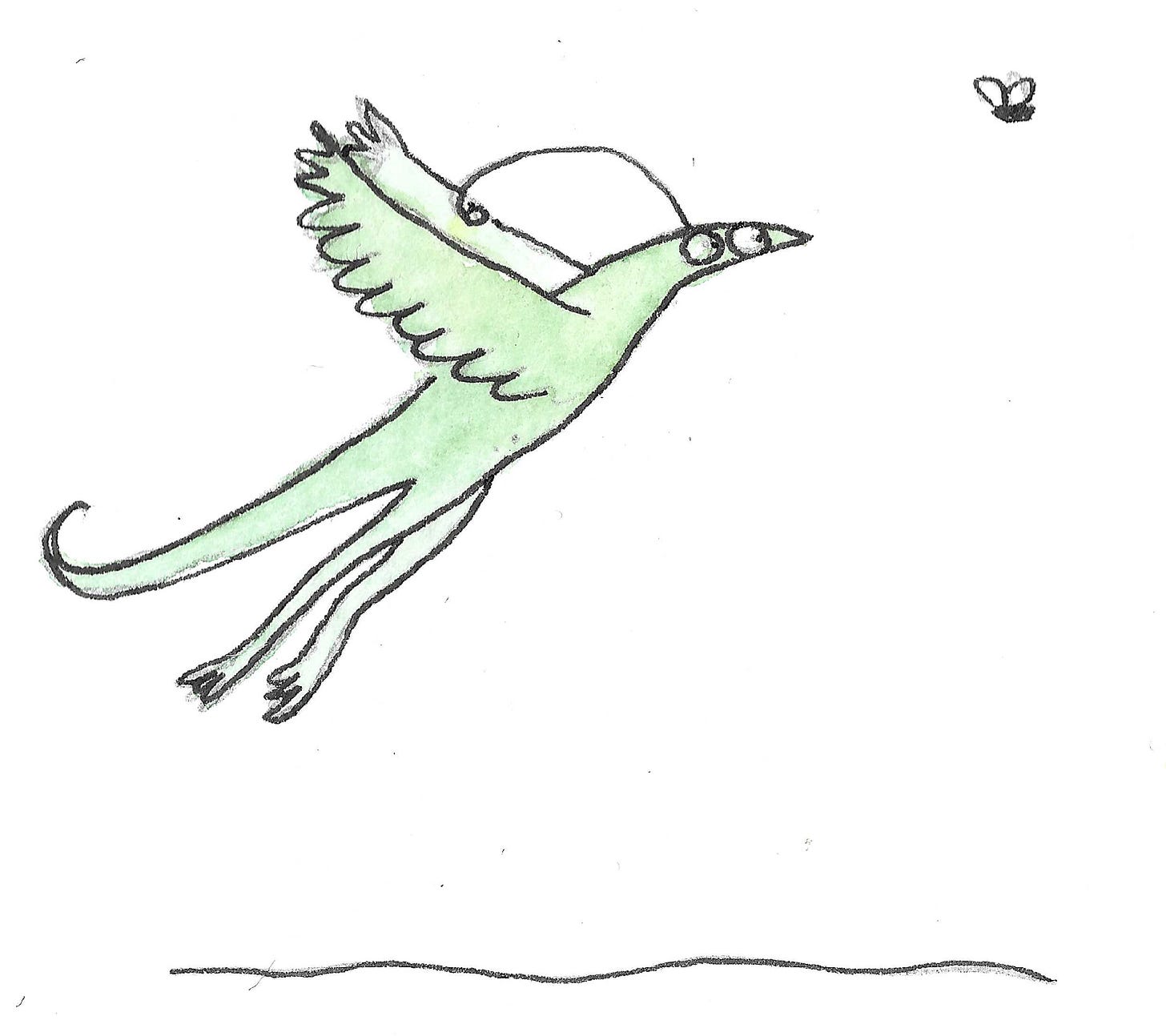Flying has fascinated humans for millennia. I’m not sure why we covet the birds who fly in the sky and not the moles who burrow in the dirt, but as a species, we seem to have collectively decided that flight is the ultimate form of locomotion.
So of course the next question is: how is it that birds and bats and bugs got this evolutionary gift? The answer is that we don’t know for sure, but we have some good guesses. For now there are two main hypotheses, which I’m calling “ground-up” and “tree-down.” Let’s take a look at each of these.
A hypothetical animal (let’s call it a Blumpf) lives in an environment with some hills and some trees. The Blumpf does not currently fly, but we know it will develop flight.
According to the ground-up hypothesis, the Blumpf does a lot of running and jumping. This might be to catch prey, or to escape a predator, or something else entirely; it doesn’t matter much for our purposes. The important thing is that it runs a lot and jumps a lot.
Jumping is an energetically tiring activity, and any help would be appreciated. So over time, the Blumpf starts flapping its arms to give it a little push. As generations go by, the most successful Blumpfs have membranes or feathers that give their arms more surface area, which helps give them more and more lift when they flap. They can jump farther and farther until they’re not really jumping anymore — they’re flying.
If, instead, we follow the “tree-down” hypothesis, Blumpfs spend much of their lives in trees. They’re kind of like squirrels and jump around from branch to branch to get food, escape from predators, etc. Sometimes, though, their target location is far away, and they have to fall down a bit to get there.
Well, thanks to the existence of gravity, falling isn’t very hard. Falling accurately and without getting hurt is harder, though, so any adaptation that would help the Blumpf reach its target and not its death would be a plus. So over generations, the Blumpfs with some amount of skin or feathers between their bodies and their limbs are able to glide more than fall. At some point (it’s unclear when or why), some of these gliders start to also flap their new wings, and flight is developed.
The two hypotheses are pretty similar, and the difference between them essentially boils down to whether a species glided first or flapped its wings first. And, as is often the case in science, both are probable, just in different groups of animals. Avian flight, for example, is most likely explained by the ground-up approach, based on fossils from flying dinosaurs. Insects might also have gained flight this way, maybe taking advantage of the wind that blew them into the air. Whereas bats, who sleep on cave ceilings and other high places and drop into flight, seem good candidates for the tree-down hypothesis.
Then we have all the animals that technically don’t fly but get pretty close, like flying fish and sugar gliders. Based only on my own logic (and not on research), it seems like flying fish would have started “flying” using a water-up approach, whereas sugar gliders tend to stay in the air by extending their leaps down from branches.
All of this is another example of convergent evolution, where not only the shape of these organisms, but also their behavior, have evolved independently to become very similar. Flying fish are no more related to birds than any other fish are, for example. But because flight is a pretty useful adaptation, all these organisms have developed it nonetheless.
If only we could develop it too.












I am really enjoying your posts! thanks for sharing :)